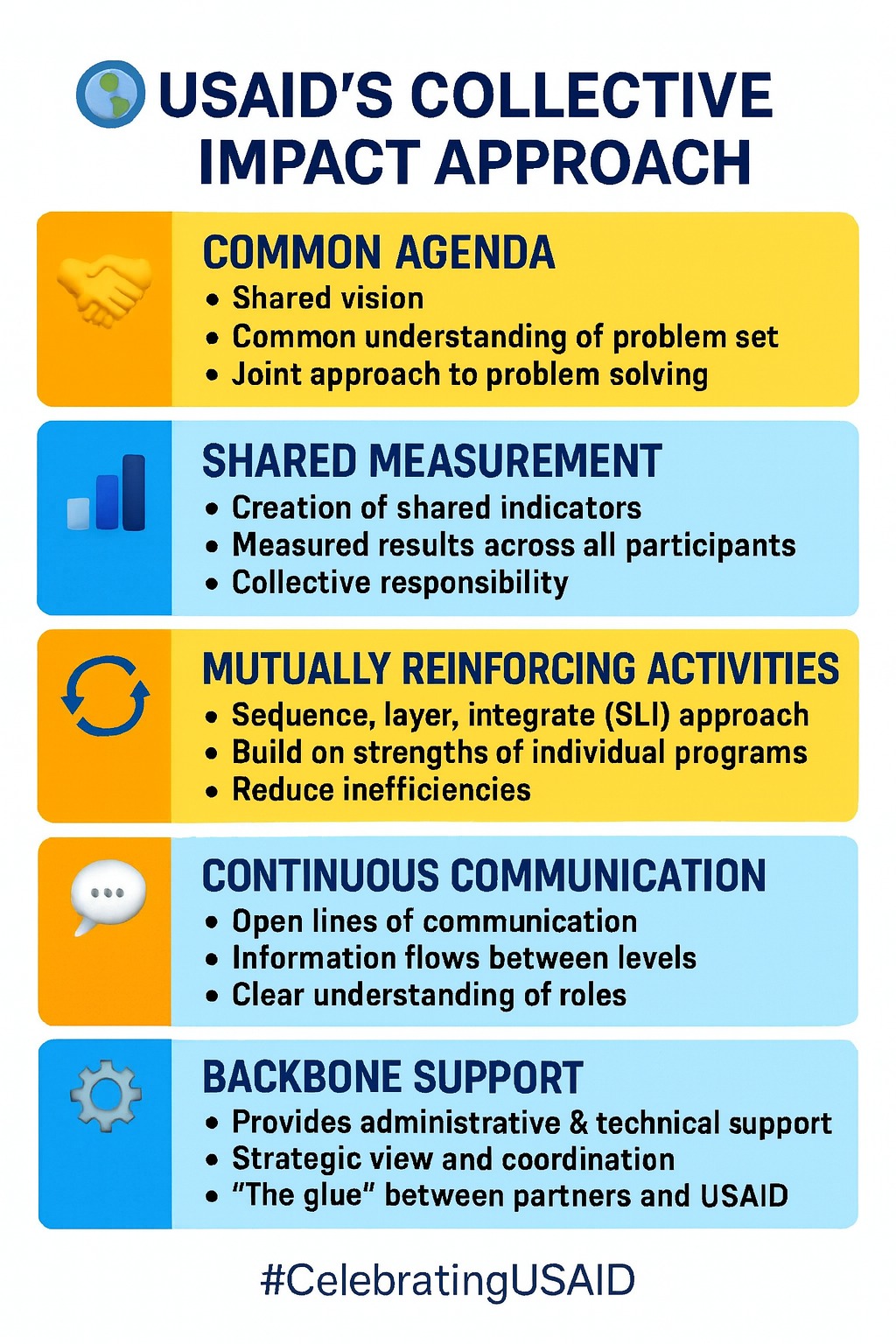In this Week 1 focus on distinctive USAID approaches, I recently reflected on localization, and Dorine Genga and Francis Kahihu, PhD. have written on CLA, I now turn to another framework that has profoundly shaped USAID’s development practice: the Collective Impact approach.
At its heart, Collective Impact recognizes that no single actor—government, NGO, or donor—can solve complex challenges alone. Progress requires multiple players working toward a common agenda, using shared measurements, engaging in mutually reinforcing activities, maintaining continuous communication, and supported by a dedicated backbone function. These five elements shaped partnerships that delivered results greater than the sum of their parts.
This approach came alive in northern Kenya through the Partnership for Resilience and Economic Growth (PREG). What began as an effort to reduce duplication in northern Kenya’s ASAL counties evolved into a platform for joint planning and sequencing, layering, and integration of interventions. The backbone support role was initially carried by DAI’s Africa Lead and later by ACDI/VOCA’s Resilience Learning Activity. These neutral facilitators ensured partners stayed aligned, built trust, and learned together, allowing county governments to lead coordination in new and effective ways.
The Regional Resilience Framework 3.0, which I had the privilege to help revise, provided a conceptual anchor for this shift. It emphasized that resilience is not achieved by isolated projects but through systems of actors, across sectors and borders, pulling in the same direction.
This thinking is now embedded in Ethiopia’s Partnership for Lowlands Resilience Activity (PLRA), for which I developed the program description. PLRA established backbone support to strengthen the Ministry of Irrigation and Lowlands and regional secretariats, ensuring that large-scale resilience investments are sequenced, layered, and integrated. Its theory of change assumes that if partners commit to a common agenda, shared learning, and coordinated implementation, then the resilience of pastoral households and institutions will be sustainably strengthened.
The Collective Impact approach, though less visible than infrastructure or service delivery, may be one of USAID’s most enduring legacies: leaving behind not just projects, but platforms for coordination, learning, and resilience that countries can sustain into the future.
Jennifer Maurer, Jennifer Karsner, James Collins, Hellen Kariuki, Craig Davis, PhD, Loise Wagaki, Catherine Mbindyo, Michael Ahere, Margaret Mwangi, Mulinge Mukumbu Mukumbu, Thom Wallace, Jason Oyugi, Mercyline Adhiambo, Faith Njoki Njung’e, M.A., Dubale Admasu, Felesia Muyia-Odada, Ngoha O., Albert Waudo.

Want to share with a friend?
Tags:
No responses yet